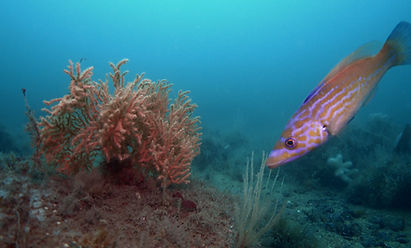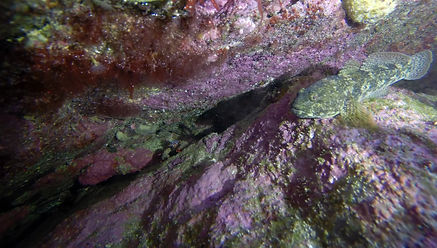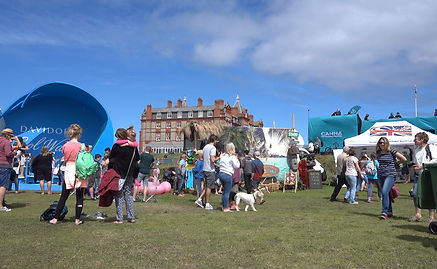
HYDRO MOTION MEDIA
creative underwater photography and film cornwall uk
Hydro Motion Media's biggest project to date is their new film "‘MCZ’ The marine life of Newquay and the Gannel Marine Conservation Zone". Hydro Motion Media ran a crowdfunder campaign to raise the money to make this film, they were also awarded a small grant from seachangers.org. In keeping with their community investment commitment as a registered C.I.C, the documentary will be provided as a free resource to raise awareness of marine life across the UK. It will be screened at schools and colleges, film festivals and other marine conservation events to show the importance of protecting our oceans on a local and global scale.
The film will explore the different habitats of the MCZ, from the offshore reefs home to corals and anemones to the humble rockpool. It will reveal species never before captured on film, examining the fascinating lives of these hidden creatures, and illustrate the amazing diversity that exists in our oceans to justify why we must protect them.
Filming for the documentary will include the use of both modern and innovative techniques. Super slow mo, time-lapse and 4k will be used to open the window on a world beneath the waves not seen before. Specially developed macro videography will expose the most intricate detail of even the very tiniest inhabitant of the MCZ. The film has focus on the lesser known inhabitants of the Cornish coast, giving a unique view of the sub marine.

'MCZ' The marine life of Newquay and the Gannel Marine Conservation Zone


The story so far...
Over the summer we have been fortunate enough to shoot a range of fascinating species and habitats, working closely with the Cornwall Wildlife Trust and Seasearch, and are extremely pleased with our results so far. Below is an insight into some of the scenes we have been working on.
Pink sea fan reefs
The pink sea fan (Eunicella verrucosa) initially appears as if it belongs on a coral reef in the tropics, but infact it can be found right here in Cornwall. In some locations, the pink sea fan has formed spectacular reefs, famously known to those who have ever dived the Cornwall Manacles MCZ. However, it is only on closer inspection of the sea fans that you discover something incredible. Its branches host three separate invertebrates: the sea fan false cowrie Simnia hiscocki, the sea fan anemone Amphianthus dohrnii, and the nudibranch Tritonia nilsohdneri. All three species can be found living on these fans, and if you’re lucky enough to come across it, sometimes all together simultaneously. They are all dependent on the sea fan for their existence, illustrating how important a single species can be in maintaining biodiversity.

The Pink Sea Fan is a UK BAP priority species of principal importance for the conservation of biodiversity under the Natural Environment and Rural Communities Act 2006. Furthermore, it is a nationally scarce species, protected under Schedule 5 of the Wildlife and Countryside Act 1981 (protected from being sold, offered for sale or being held or transported for sale either live or dead, whole or part) and listed as globally vulnerable on the IUCN Red List.
Despite its biological importance and protective legislation, pink sea fan habitat is very vulnerable, especially to netting from fishing boats. Amazingly pink sea fan reefs have been recorded just outside the boundary of the Newquay and Gannel MCZ. The film will raise awareness of this fact and add weight to the case to extend the boundary lines to include these ecosystems.
A pink sea fan and male cuckoo wrasse
Amongst the protected features of Newquay and Gannel MCZ is the rare Giant goby Gobius cobitis. As well as being Britain’s largest goby, growing up to 27cm, it is also protected under the Wildlife and Countryside Act 1981. Within the Newquay and the Gannel MCZ there exists a protective refuge for this species in a network of rockpools. However, this refuge sits next to one of the UK’s busiest beaches. The film will look at the comparison between man and fish to illustrate the fragility of nature and mankind's increasing impeachment into wild spaces.
To capture the elusive lives of the Giant goby we've been using timelapse photography to get closer to individuals than we ever have before. We've captured some incredible behavior, and it's definitely evident that the Giant goby really does rule the rockpools.

An adult Giant goby lurks in a crevice of a rockpool
The Giant Goby

People and the MCZ
Anyone who has ever been to Newquay in the summer months, or any seaside town in Cornwall, will know the sheer scale of people who come to enjoy some of the UK's best beaches. Over the summer we've been filming to address some of the issues associated with having such high numbers of people within the Newquay and Gannel MCZ. One issue we will be addressing in our film will be plastic pollution. We want to understand how plastics affect the marine life of the MCZ and what's being done to tackle it. The plastic problem is a complicated one, where microplastics are being ingested by marine life, and consequently entering the marine food chain.
For the most recent news on our new documentary MCZ : The marine life of Newquay and the Gannel
